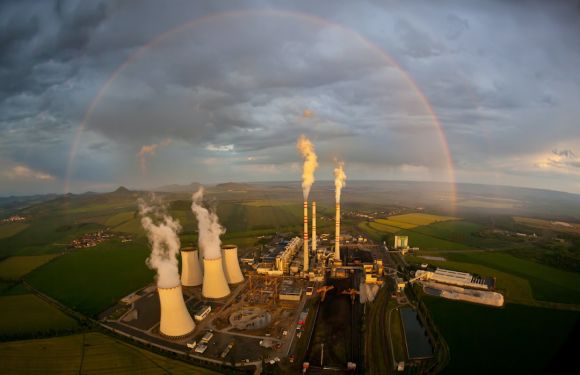Thermal power plants play a critical role in generating electricity by harnessing heat. These plants are widely used across the world due to their efficiency and reliability in converting heat energy into electrical energy. In this article, we will explore the working principle of thermal power plants, their components, and their environmental impact.
The Working Principle of Thermal Power Plants
Thermal power plants operate on the principle of thermodynamics, specifically the Rankine cycle. The cycle involves four main processes: heating the working fluid, converting it into high-pressure steam, expanding the steam in a turbine to produce mechanical work, and finally, condensing the steam back into a liquid for reuse.
Components of a Thermal Power Plant
1. Boiler: The boiler is the heart of a thermal power plant. It is responsible for heating the working fluid, usually water, to generate steam. The heat required for this process is obtained from the combustion of fossil fuels like coal, oil, or natural gas.
2. Turbine: The turbine is a prime mover in a thermal power plant. It is driven by the high-pressure steam produced in the boiler. As the steam expands through the turbine blades, it imparts rotational motion, which is used to drive the generator to produce electricity.
3. Generator: The generator converts the mechanical energy from the turbine into electrical energy. It consists of a rotor and a stator. The rotor rotates within the stator, creating a magnetic field that induces an electric current in the stator windings.
4. Condenser: The condenser plays a crucial role in the Rankine cycle by converting the steam back into a liquid. It achieves this by cooling the steam using cold water from a nearby source, such as a river or a cooling tower. The condensed water is then pumped back into the boiler for reuse.
Environmental Impact of Thermal Power Plants
While thermal power plants are efficient in converting heat into electricity, they also have significant environmental implications. The combustion of fossil fuels releases greenhouse gases, such as carbon dioxide, into the atmosphere, contributing to global warming and climate change.
Additionally, thermal power plants require a substantial amount of water for cooling purposes. This water is often sourced from nearby rivers or other bodies of water, leading to ecological disruptions and potential water scarcity for local communities.
Furthermore, the disposal of ash and other byproducts from the combustion process can pose environmental hazards if not properly managed. These byproducts often contain heavy metals and other pollutants that can contaminate soil and water sources.
Mitigating the Environmental Impact
To mitigate the environmental impact of thermal power plants, several measures can be implemented. These include:
1. Adoption of cleaner fuels: Shifting from coal to cleaner alternatives, such as natural gas or renewable energy sources like solar and wind, can significantly reduce greenhouse gas emissions.
2. Improved efficiency: Enhancing the efficiency of thermal power plants can reduce fuel consumption and emissions. This can be achieved through the use of advanced technologies like supercritical and ultra-supercritical boilers, which operate at higher temperatures and pressures.
3. Water conservation: Implementing water-saving technologies, such as dry cooling systems or wastewater treatment facilities, can help reduce the water footprint of thermal power plants.
4. Proper waste management: Implementing strict regulations and protocols for the disposal of ash and other byproducts can prevent environmental contamination. Additionally, exploring innovative uses for these byproducts, such as in construction materials, can minimize waste.
In conclusion, thermal power plants are vital in converting heat into electricity. Understanding their working principle and components helps us appreciate the complexity and efficiency of these plants. However, it is crucial to address their environmental impact through the adoption of cleaner fuels, improved efficiency, water conservation, and proper waste management. By doing so, we can ensure a sustainable and greener future for our energy needs.





